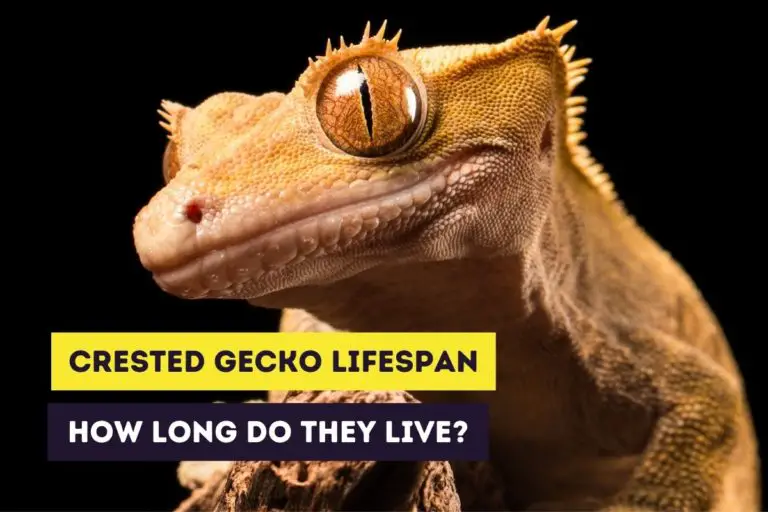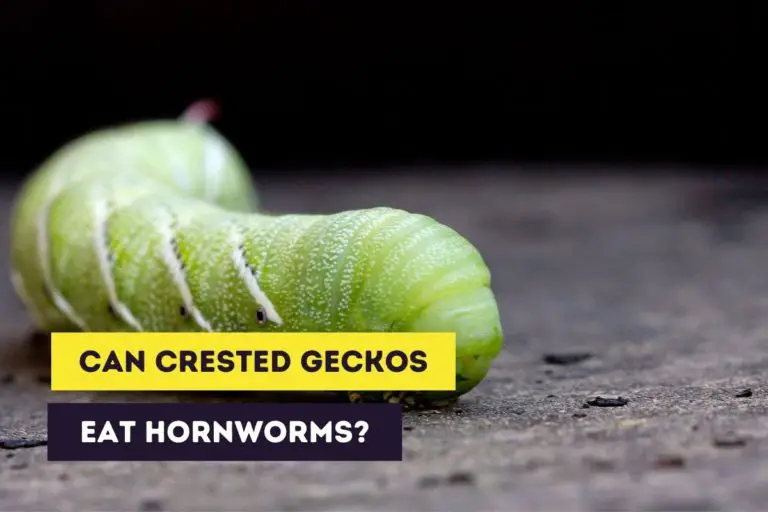Are Crested Geckos Endangered in the Wild? (CITES Status)
Estimated reading time: 5 minutes
The crested gecko is a relatively new pet and wasn’t discovered until 150 years ago. Even more interesting is that crested geckos were rediscovered in 1994 after scientists thought they were extinct. So how is the status in the wild at the moment? Are crested geckos endangered in the wild?
The crested gecko has a vulnerable status in the wild and it is considered for protected status by the Convention on the International Trade in Endangered Species of Wild Flora and Fauna (CITES).
So, the crested gecko has a low population in the wild but is widely available as a pet in captivity. So, why is the crested gecko endangered in the wild and what are people doing to prevent extinction?
If you’re interested in stickers or other products of crested geckos, you can always visit our Etsy Shop, which is called Artful Animalia. We currently only send stickers in the United States. If you’re interested in certain crested gecko-related products, don’t hesitate to contact us.
In this article, you’ll learn about the discovery and rediscovery of the crested gecko. I’ll also get into the low population of crested geckos in the wild.
This site contains affiliate links to products we recommend and use ourselves. We may receive a commission for purchases that you make through these links. If you’re interested in learning more about our affiliate links, please visit our (affiliate) disclaimer.
Historic Background
The crested gecko wasn’t discovered until 1866. The crested gecko – also called crestie – lives in a remote world region, especially in those years. However, the French zoologist Antoine Guichenot was a real explorer and stumbled upon the crested gecko on one of his voyages.
Since 1967 the crested gecko was not seen in New Caledonia. Because of this, it was believed to be extinct. This changed when Robert Seipp and Phillippe de Vosjoli led an expedition and found the crested gecko alive and kicking on Pine Island. Another expedition found crested geckos in other areas of New Caledonia.
Since its rediscovery, many biologists exported crested geckos to Europe and the United States and created breeding lines from these wild crested geckos. As a result, these geckos are the “Adam” and “Eve” of most of the crested geckos that live in captivity.
Vulnerable Status in the Wild
Although crested geckos are widely available today, the crested gecko doesn’t fare that well in captivity. The crested gecko has a vulnerable status in the wild. It’s also considered for protected status by the Convention on International Trade in Endangered Species of Wild Flora and Fauna (CITES).
What are the main threats for wild crested geckos?
The main threats to the crested gecko in the wild are:
- habitat loss
- predation by rodents and pets
- the introduction of the little fire ant
Habitat loss
Wild crested geckos are found in a small region less than 500 km². Sadly this habitat is reduced by human intervention. Although habitat loss is not only a problem for crested geckos, it is one of the most critical threats to crested geckos.
Wildfires, logging, and clearing forests for agriculture make it difficult for the crested gecko to survive. The introduction of deer and pigs have also led to habitat loss for these geckos.
Predation by rodents and pets
Other threats to wild crested geckos are the rats and (pet) cats that live where humans do. These prey upon the hatchlings and adult geckos. Since the defensive capabilities of the crested gecko are quite limited, this is a real problem.
Introduction of the fire ant
Last but not least, the electric ant or little fire ant is another main threat. The little fire ant is a small ant native to Central and South America. However, it has spread to parts of Africa, North America, Puerto Rico, Israel, Cuba, and some islands in the Pacific. New Caledonia, the home of the crested gecko, is one of the Pacific Island groups where the little fire ants have sadly spread to.
They’re an invading ant species that prey on native insects like anthropods. This is bad news since the crested gecko diet in the wild consists of fruits and insects.
The fire ants also attack crested geckos, both hatchlings and adult ones. The ants swarm upon the geckos and have a nasty sting that can lead to blindness.
Illegal collection and trafficking
The export of wild crested geckos in their natural habitat is prohibited because of their vulnerable status. Still, there is a risk of the collection and trafficking of these wild geckos at certain locations. This is also a threat to the crestie but has a far less devastating influence on the population size than the main threats mentioned above.
Will the Crested Gecko Go Extinct?
The crested gecko won’t get extinct but it’s important to protect them in the wild. Because of their low maintenance needs and easy care, there are a lot of cresties in the world. Most of them are in captivity and since they’re a popular pet there will be a lot of cresties for a long time. So no, they won’t go extinct – at least not in captivity.
Related Questions
How many crested geckos still live in the wild?
There isn’t a lot of quantitative data on the population size of the crested gecko in the wild. But what is sure, is that the population is decreasing.
Where do crested geckos live?
The crested gecko is native to the South Province in New Caledonia. The population is found in different parts. One can be found on the Isle of Pine, also called Pine Island. Another population can be found on the island of Grande Terre. One population can be found around the Blue River. This is a protected park. Last but not least, there’s a population just south of Mount Dzumac.
Want to Learn More?
If you want to learn more about crested geckos as pets, please read the following articles.
If you’re interested in getting crested geckos as pets you should also definitely read our article about baby and juvenile crested gecko care or (adult) crested gecko care.







